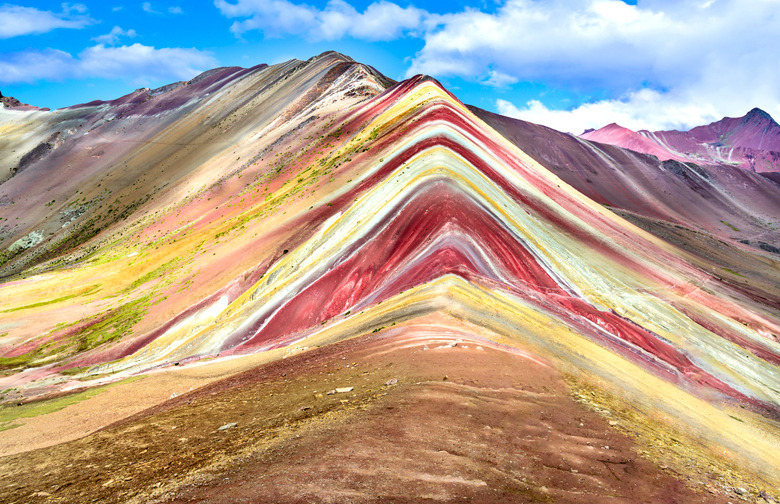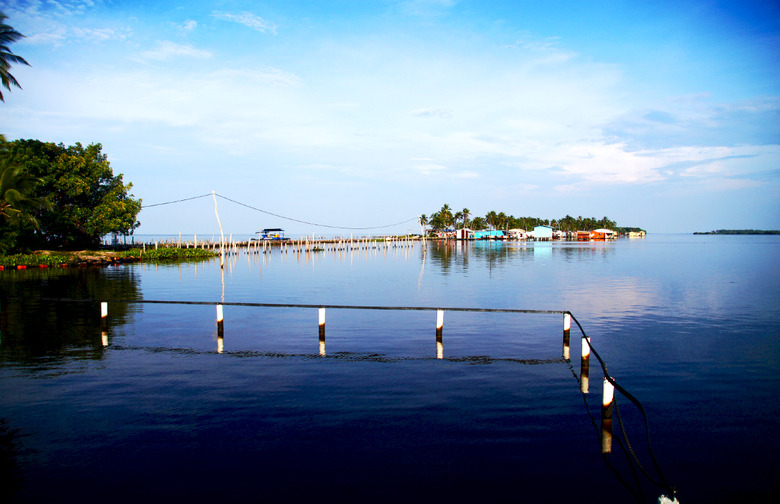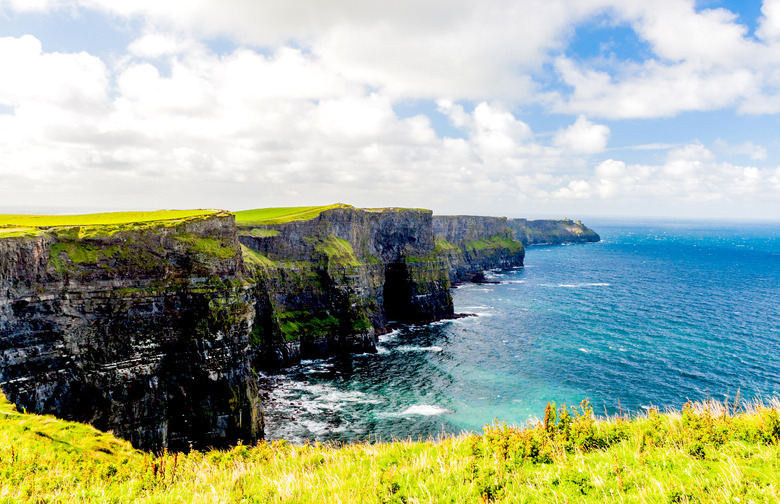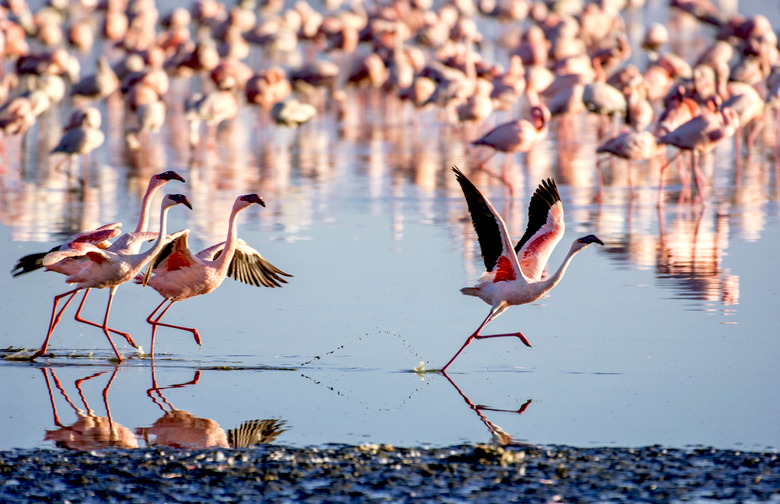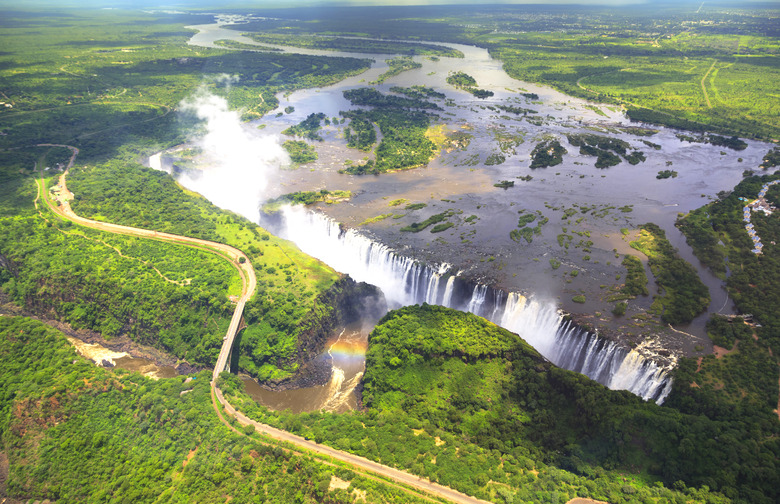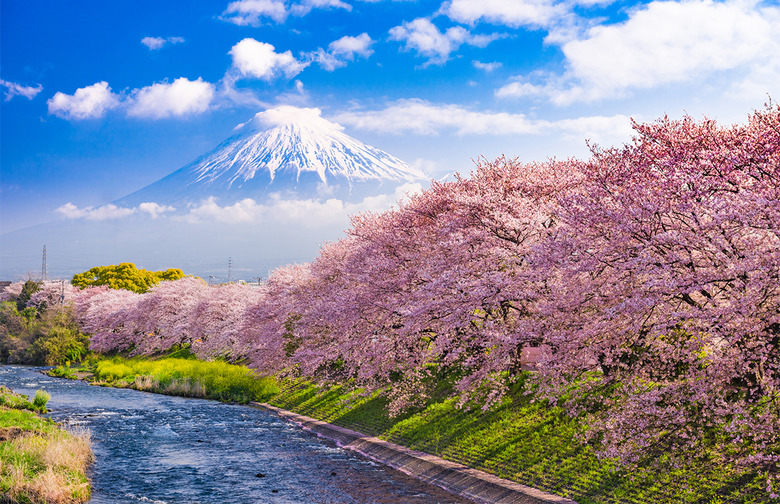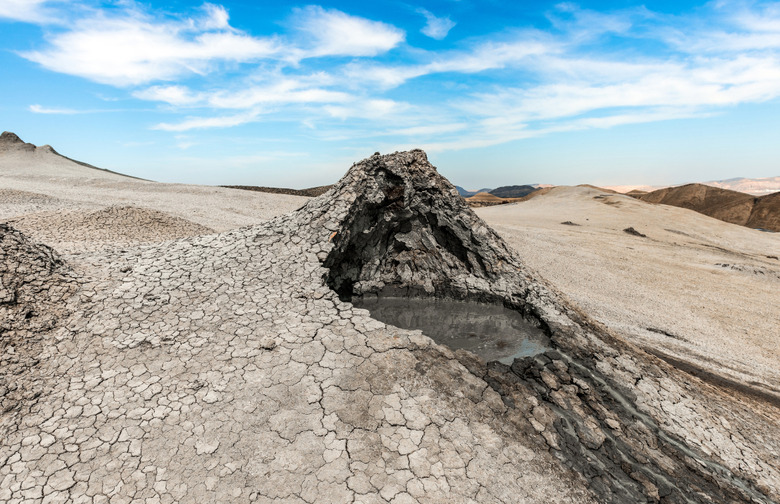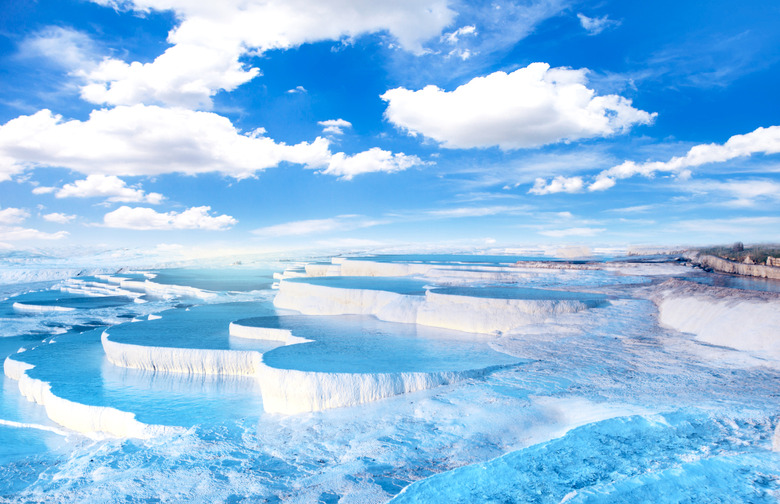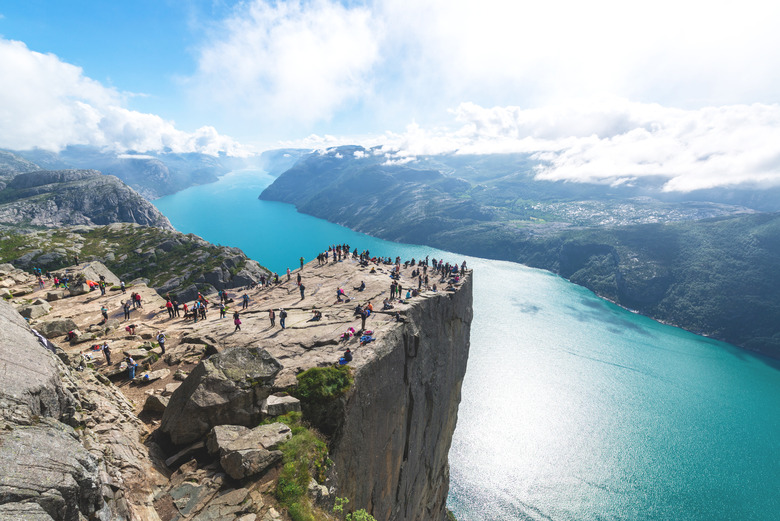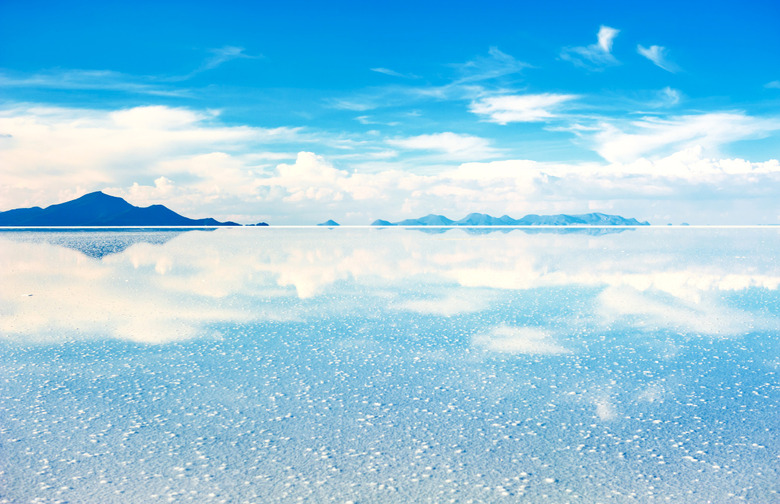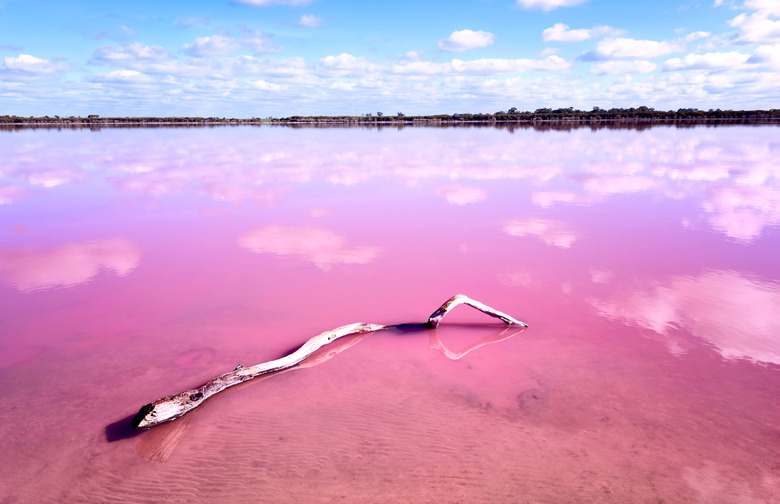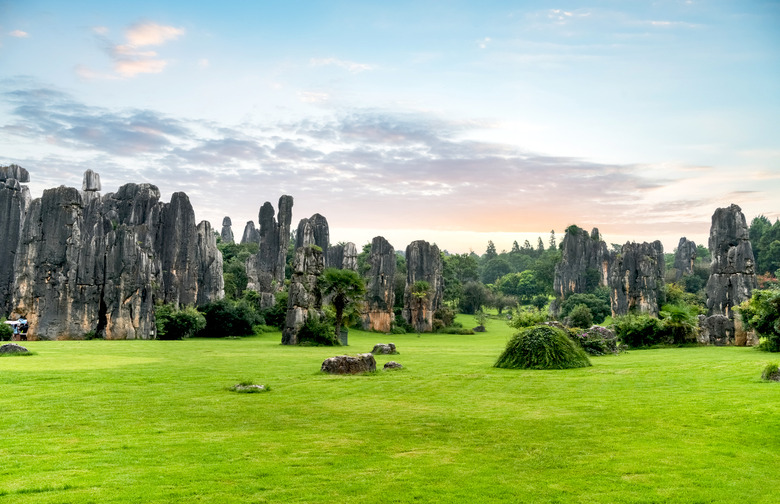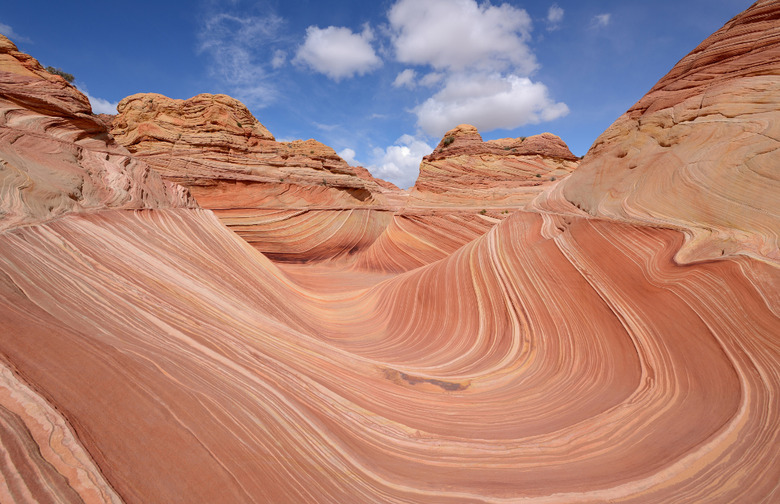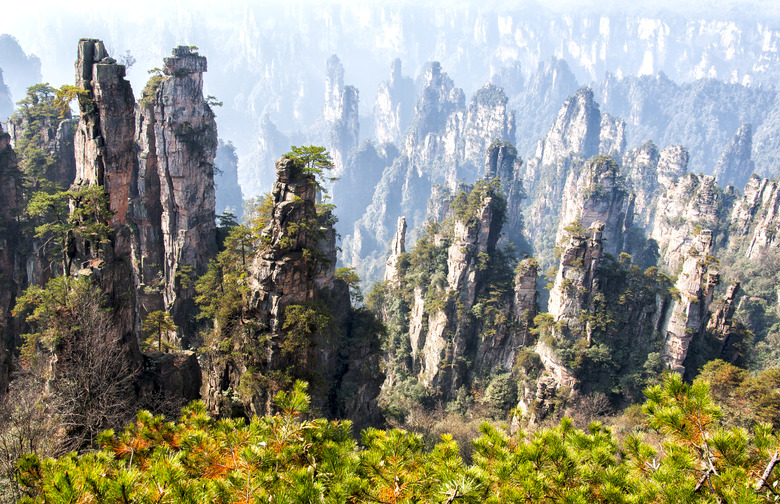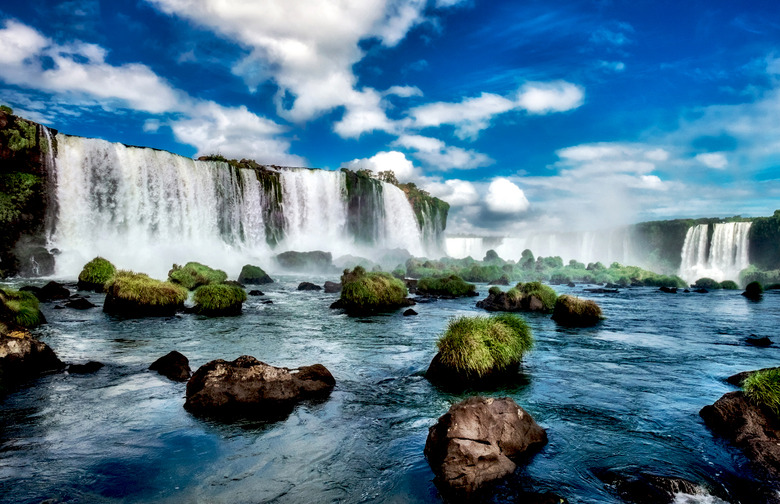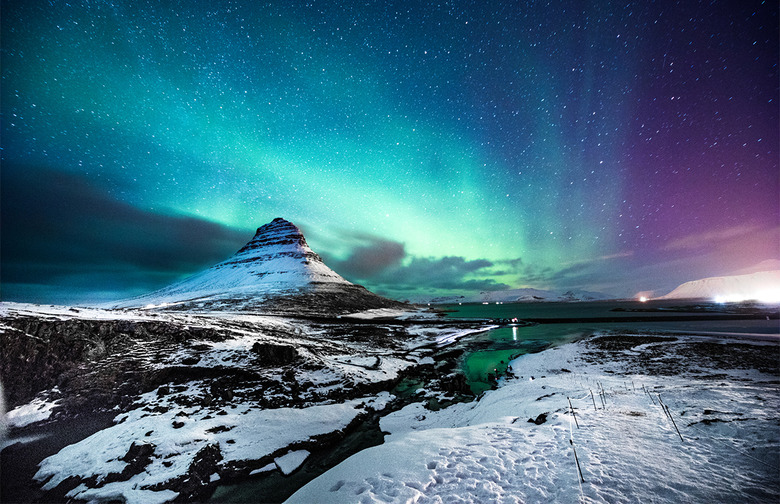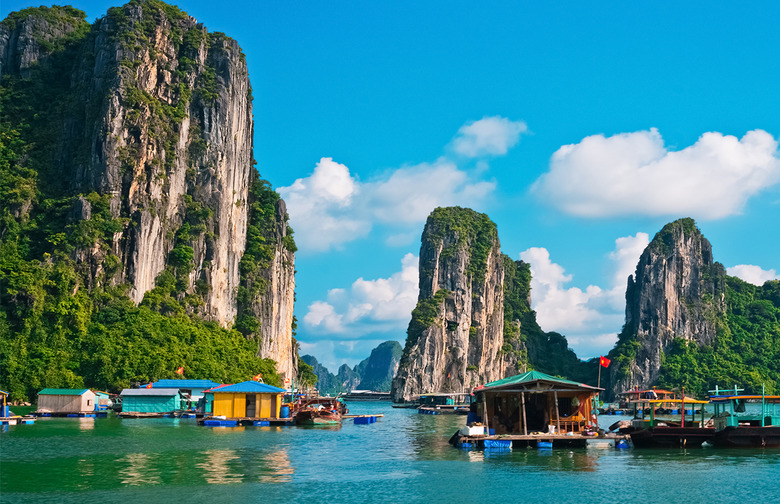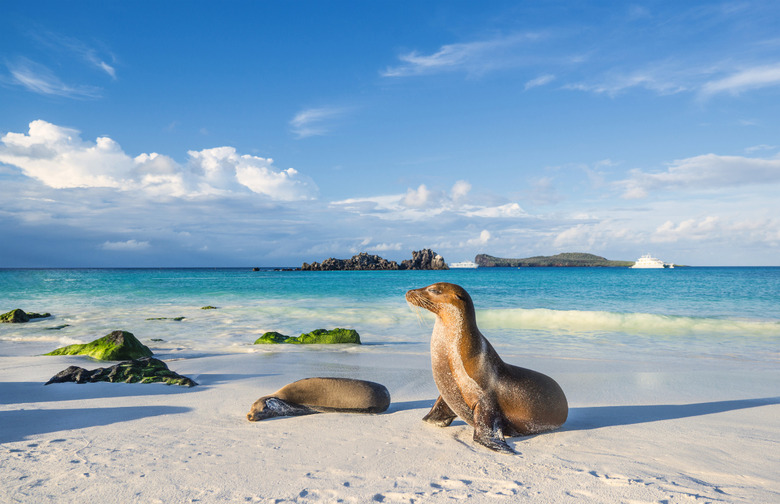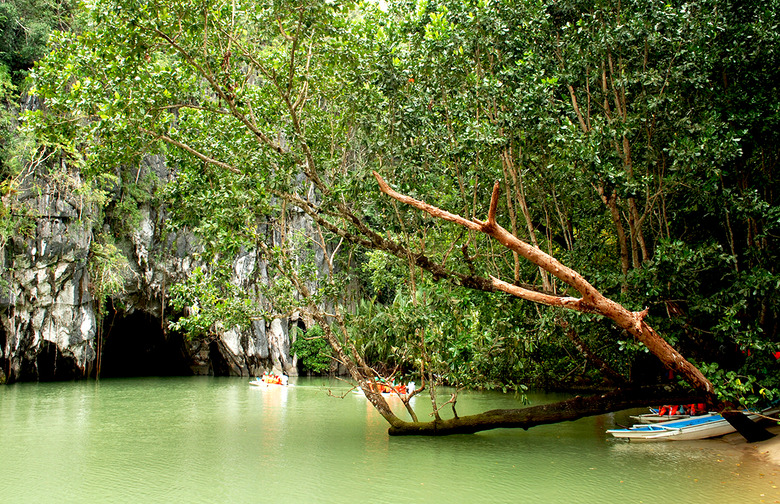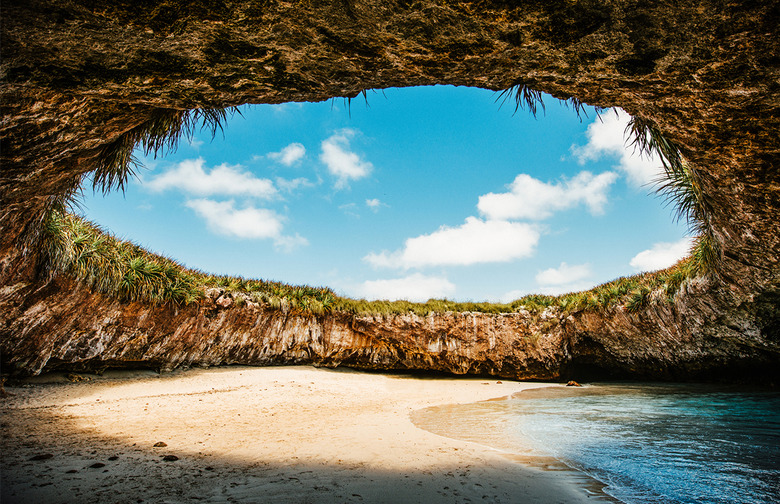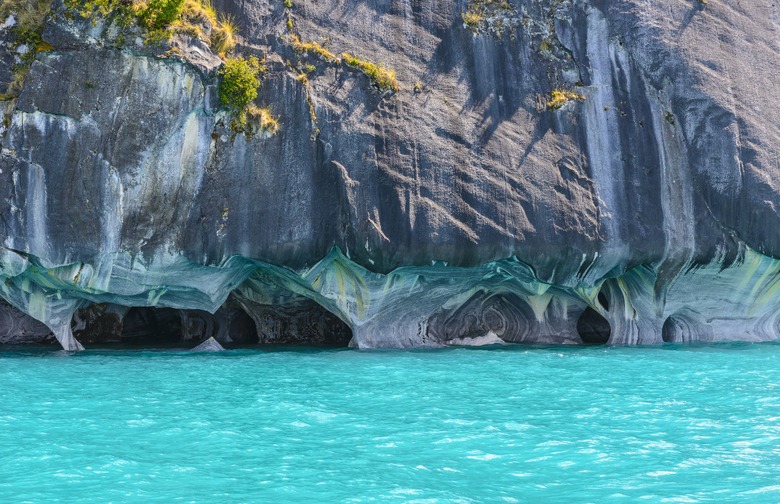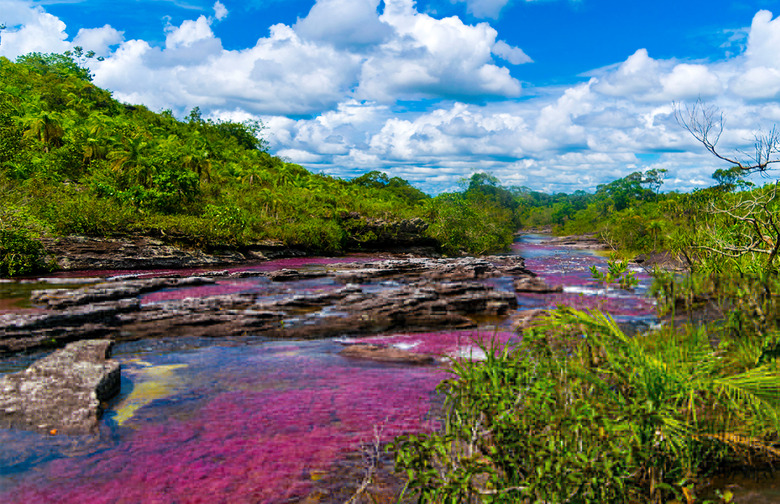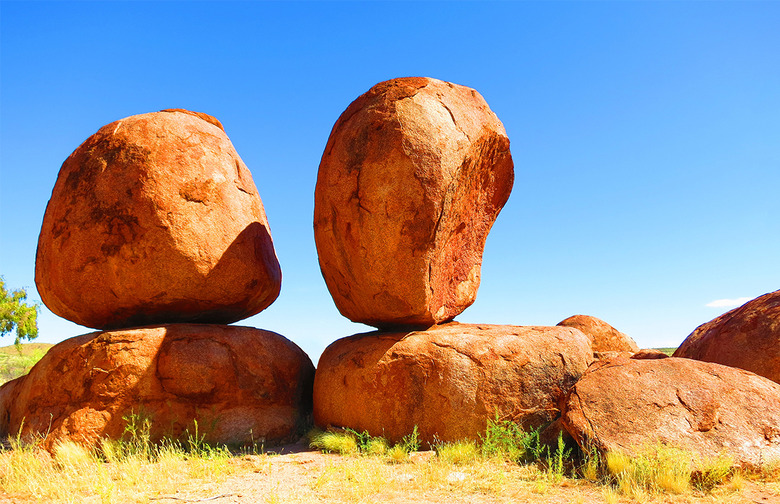Natural Wonders You Have To See To Believe Gallery
Earth is home to some truly remarkable views. You know of the destinations everyone has seen before — Niagara Falls, for example, or the Great Barrier Reef. Photos of these natural marvels make their way into history books, motivational posters, and computer backgrounds regularly. But there are hundreds of other wondrous destinations you've probably never even imagined possible.
The natural wonders featured on this list are unique treasures from across the world. You're guaranteed to find at least one destination on this list that's beyond even the most colorful corners of your imagination. Some of them appear like scenes from outer space or a green-screened movie — it hardly seems possible that these could exist on Earth!
A few of these destinations are extremely exclusive, only allowing select numbers of tourists to pass through. Others require a rite of passage for admission — a perilous hike, for instance, or a lengthy boat ride on a terrifyingly tiny vessel.
But no matter the trials required to access these scenes, it's worth it — the natural wonders on this list are too stunning to believe.
Ausangate Rainbow Mountains, Peru
These mountains deserve their majestic name — their surfaces are striped with miraculous color, ranging from magenta to gold to lavender to maroon. These mountains don't rely on paint or food coloring to get their bright pattern. The colors are largely caused by weather changes and mineralogy, warped over time. If you choose to visit this location, make sure you stop to get some Peruvian food in Cusco before you set off on your trek — the mountains are notoriously hard to get to, often demanding several days of hiking to reach their remote pocket of the Andes Mountains.
Catatumbo River, Venezuela
Don't bother checking the weather before you go — the forecast is almost always the same. The Catatumbo River endures a constant lightning storm as it flows into Venezuela's Lake Maracaibo, facing a barrage of bolts striking up to 280 times per hour for 10 hours a day, on 260 nights every year. This storm has been raging for hundreds of years and actually played a surprising role in Venezuela's independence.
Cliffs of Moher, Ireland
The Cliffs of Moher are Ireland's most popular tourist attraction, drawing a million visitors every year. One of the most magical spots in Ireland, these cliffs are nearly 400 feet tall and reach a maximum height of over 700 feet. The shale and sandstone cliffs have rocks older than 300 million years, as well as approximately 30,000 birds from over 20 species who reside there. What the cliffs don't have, however, are handrails — making them one of the world's deadliest destinations.
Grand Prismatic Springs, Yellowstone, United States
This wondrous feature is the most photographed item in Yellowstone Park — even more so than Old Faithful! This is largely due to its enormous size and incredible color scheme. It holds its fame for being the largest hot spring in the United States, spanning over 370 feet in diameter and sinking to an impressive depth of 121 feet. Yellowstone National Park is a must-see on any nationwide road trip for its great food alone; make a pit stop at one of their 52 designated picnic areas after you've marveled at the springs.
Lake Nakuru, Kenya
Located right in the middle of Kenya's Great Rift Valley, Lake Nakuru is incredible for more than just its geographical features. The large expanse of blue is spattered with pink from the thousands of pink flamingoes that live there. You'll find herds of other wildlife as well, including warthogs, baboons, rhinos, hippos, and buffalo. If you haven't had enough of nature by the time you've left, take a short trip over to this Kenyan hotel, where you can literally eat breakfast with a giraffe.
Mosi-oa-Tunya/Victoria Falls, Zambia and Zimbabwe
The Mosi-oa-Tunya, or Victoria Falls, is the world's largest sheet of falling water. While it's neither the widest nor the tallest, its combined size outdoes all other waterfalls around the globe. Its source, the Zambeze River, vaults off of a cliff that spans over a mile long and crashes down over 350 feet to the rocky depths below. Visitors can take a swim in the terrifying Devil's Pool, which peers over the edge. When the water level is too high, the pool is closed off for safety reasons.
Mount Fuji, Japan
Located on Honshu, Japan's largest island, Mount Fuji is the country's most famous landmark — and its most visible. The snowy peak of the impossibly tall peak can be seen from many locations in Japan, overlooking its other wondrous nearby attractions. Mount Fuji is an active volcano, though it hasn't erupted since 1708. The symmetrical structure has, according to UNESCO, "inspired artists and poets and been the object of pilgrimage for centuries."
Mud Volcanoes, Gobustan, Azerbaijan
Azerbaijan is home to half of the world's mud volcanoes — smaller holes in the Earth's crust that erupt mud rather than lava. The gray, oozing volcanoes are open to those who want to bathe in them and are generally considered safe. However, every 20 years or so, one of them will ignite deep below the surface and create a massive explosion. The phenomena usually don't harm any humans, though thousands of sheep are believed to have died from the blasts.
Pamukkale, Turkey
Pamukkale translates to "cotton castle" in Turkish, which somewhat describes these snow-white terraces of thermal waters flowing calmly over ancient carbonite deposits. Ever since ancient times, the calm baths have been a draw for weary travelers looking to relax their bodies and minds in the midst of the jaw-dropping views. The views are stellar — the stepping stones of sharp, white rock look like something out of a Star Wars movie rather than a product of terrestrial geology.
Pulpit Rock, Preikestolen, Norway
Looming nearly 2,000 feet above the Lysefjord River, the top of Pulpit Rock attracts thousands of visitors to its alarming edge. At the cliff's peak is a small plateau, a tourist attraction and cliff-diving site without a railing. While cliff-diving might be an activity for only the most adventurous of travelers, a quick trip to the top is well worth the climb. The full hike takes anywhere from four to five hours and ascends over 1,100 feet.
Salar de Uyuni, Bolivia
At first glance, Salar de Uyuni looks like a sheer expanse of frozen ice. But this natural wonder is actually the world's largest salt flat, spanning an unimaginable total of 4,086 square miles. The salt flat was formed from a prehistoric lake that ran dry, leaving this desert-like plain behind. Across the expanse of land, the salt itself is remarkably flat. The elevation of the feature varies within just one meter over its entire area. This salt "crust" covers a simmering pool of brine, often tapped into for its enormous store of lithium.
Spencer Lake, Australia
If you plan your visit right, the water in this lake looks eerily like Pepto-Bismol — a pretty pink hue that earned Spencer Lake its nickname of Pink Lake. The color of the water is due to green algae and a high concentration of brine shrimp. For the interaction to produce the stunning shade, the salinity of the ecosystem must exceed that of sea water. The temperature and light conditions must also meet specific parameters. Since these conditions are somewhat rare, many who have visited the lake expecting to see a coveted pink view have grown angry and disappointed. As a result, there are active petitions to revoke the nickname Pink Lake or, alternatively, alter the natural conditions of the feature to warp the salinity manually.
Shilin Stone Forest, China
Limestone protrudes from the ground in the Yunnan Province of China, forming a collection of rocks that looks remarkably like a forest. The rock formations remind many visitors of petrified fossils of trees. It's deemed a must-see for tourists visiting China, so make sure you stop by — and while you're there, pick up some real Chinese food. The stuff you're getting abroad would probably never be served in China.
The Wave, Arizona
You'll have to embark on a perilous hike if you want to reach this enigmatic attraction. But the hike is well worth the strain — possibly even outshining the Grand Canyon in its wow-factor, The Wave is a tall, undulating rock formation you have to enter a lottery to visit. Winners of the lottery are granted a permit to try their luck at the hike and armed with a map and information booklet. The troughs are made of layers of eroded sandstone from the Jurassic age, worn over time by infrequent runoff and, later, forceful wind.
Zhangjiajie National Forest Park, China
We know what you're thinking: This looks more like something out of the movie Avatar than it does an Earth-bound structure. That's because, in a way, it is. The designers of Avatar's climate were inspired by these miraculous pillars of rock and wildlife, formed over time not by liquid water erosion, but instead by expanding and thawing ice. The foliage on the heights of each rock face is surprisingly dense and can be visited — though we don't advise you try if you're afraid of heights.
Iguazu Falls, Argentina and Brazil
These stunning waterfalls are located directly on the border of Argentina and Brazil and, when taken as a whole, make up the largest waterfall system in the world. Legend has it that a beautiful woman named Naipí was arranged to marry a diety. She and her mortal lover Tarobá fled together in a canoe, but were discovered by the angry god. He brutally killed the couple with a powerful slice — the now gaping river — and condemned them to an eternal fall.
Northern Lights, Antarctica
The aurora borealis, also known as the northern lights, is a baffling feat of nature located in the northernmost areas of the world. Its mirror image in the Southern Hemisphere is the aurora australis, which can be viewed from parts of Antarctica. This natural light display is visible at all times, but is best viewed under the cover of night — you'll get an even better view if you can manage to find a remote area far from other tourists.
Ha Long Bay, Vietnam
Ha Long Bay is a large expanse of ocean off the coast of Vietnam that hosts thousands of isles and limestone formations. While some lament that the area has become overrun by tourists and garbage, it's hard to deny the wonder this formation inspires. The limestone of the 1,600 isles has been worn down by 500 million years of tropical downpours and is coated with lush plant growth and wildlife. Some of the islands hide gorgeous caves in their hollow interiors. Visitors can tour the isles on traditional Vietnamese boats.
Galapagos Islands, Ecuador
As if the geographical features alone weren't enough to marvel at, these islands are home to a unique array of species that can't be found anywhere else on Earth. The islands are famous for inspiring Charles Darwin, who visited the islands as a young naturalist and studied the distinct populations, to develop his theory of evolution. The islands' harsh geographic conditions and stunning wildlife can be accessed through designated visitor sites and guided tours.
Puerto Princesa Underground River, Philippines
This subterranean masterpiece is a cave with two stories — accessible only by boat for curious travelers. It's been nominated one of the New 7 Wonders of the World, and for good reason. The destination flaunts over 5 miles of stunning limestone formations. A group of environmentalists and geologists only recently discovered the second floor, connected by waterfalls to the uppermost cavern.
Hidden Beach, Islas Marietas, Mexico
Nicknamed the Playa del Amor ("Beach of Love"), this Mexican beach is undoubtedly the most unique on our list of the world's best beaches. On the Islas Marietas, there is a gaping hole in the greenery. Inside, you'll find a hidden beach, complete with saltwater and sunshine. The only way to access the beach is through a long and winding water tunnel — you can swim, kayak, or take a boat from the Pacific Ocean.
Marble Caves, Chile
The marble caves of Chile are a marvelous structure carved into the Patagonia Mountains. Surrounded by water that's eroded into the caves for centuries, these rock surfaces are stunningly reflective, creating a dynamic experience of light and structure that's impossible to do justice with a photo. The caves are best seen at sunrise or sunset, when the sun's rays bounce off of their interior. There is no way to access them but by boat — but they're well worth the voyage.
Caño Cristales River, Colombia
Nicknamed the "River of Five Colors," the Caño Cristales is a chromatic waterway off of the Guayabero River in Columbia. It's known for its striking color palette of yellow, green, blue, black, and bright red. The river has strong and speedy currents, featuring rushing waterfalls and quick rapids.
Socotra Archipelago, Yemen
The most stunning thing about this feature isn't necessarily the geography — it's the plant life. The archipelago of four islands is home to bizarre trees that almost make the islands appear extraterrestrial, along with other endemic plants and animal species found nowhere else on Earth. Taking a trip to this island is like landing on another planet.
Devils Marbles, Australia
It is difficult to imagine how such perfectly spherical rock formations could have been molded by natural processes. But in Australia, the Devils Marbles, carved from erosion and weathering alone, defy logic and, as a result, have become one of the most spiritually significant sites in the world. The traditional Aboriginal owners of the land instill great cultural value in the rocks, so they're heavily protected. However, they are available for tourist viewing; they could be an even weirder sight than even the most oddball American tourist attractions.

